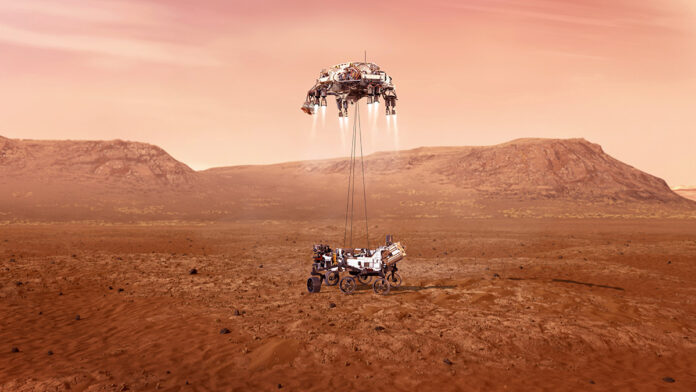The Perseverance, Mars 2020 mission is completing its transit phase with the landing phase on Mars scheduled to begin tomorrow, February 18th, at 2:15 p.m. Eastern Standard Time. The technology being deployed is the same as was used to successfully put Curiosity, the current NASA Martian rover, on the surface of Gale Crater back in 2012. There are some new enhancements to this landing event. For the first time, we will see what Perseverance sees as it descends, and we will be able to hear the sounds of Mars as well. Once landed Perseverance will deploy for the first time an aerial drone to fly the Martian skies. It should make for an exciting event and mission.
For readers unfamiliar with the Mars 2020 mission check out two previous postings on this site at:
and
The landing phase uses Doppler Lidar, sending laser beams to bounce off the surface of Mars. The rover’s six tires are a technological improvement over the ones used on Curiosity. Made of unbreakable material with shape memory, when driving over the boulder-strewn Martian surface, these tires will deform and then reshape themselves to make driving “flat-tire” free (just so you know, there is no air in the tires deployed on Perseverance).
Another innovation over Curiosity in Perseverance is the increasing use of artificial intelligence. The computer brain of this new rover gives it the ability to navigate the Martian terrain without human handlers here on Earth plotting its course. This autonomous driving capability has been built into the rover allowing it to self-drive.
One of my UK readers, Beth Watson, sent me an interesting link that highlights how the technology in Perseverance is soon to become part of the cars and trucks we drive here on Earth. You can check out the details at:
https://www.selectcarleasing.co.uk/news/article/nasa-tech-in-our-cars
The UK company, Select Car Leasing, produces a lot of interesting information on the evolution of transportation and is definitely worth checking out. From AI for navigation, Doppler Lidar for collision avoidance, superelastic tires that never puncture, self-repairing engines, and even more supportive car seats, NASA is contributing mightily to the transportation revolution ongoing here on Earth as we move to zero-emission vehicles over the next decade.









